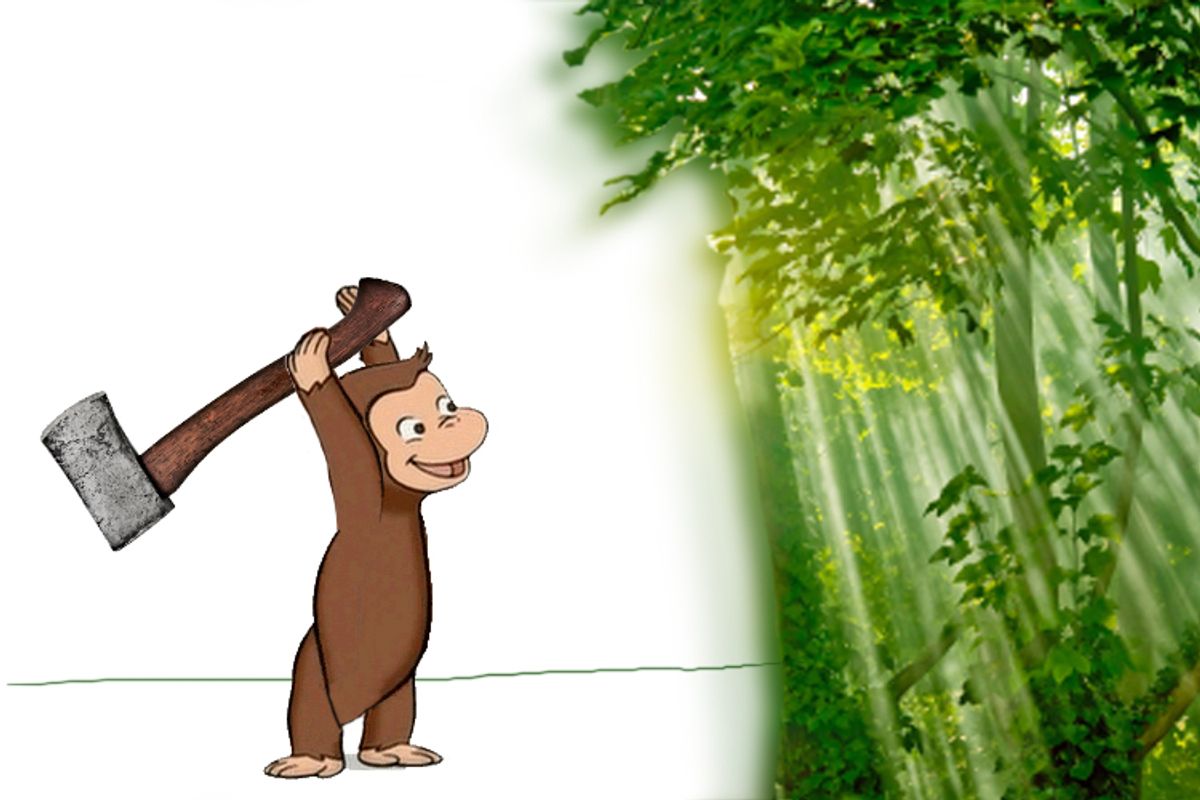What a nightmare! According to a new study released by the Rainforest Action Network (RAN), a hefty percentage of children's books sold in the United States are made out of paper that includes "fiber linked to the clearing and conversion of Indonesia's rainforests." Even worse, laboratory testing apparently found such fibers in at least one children's book about the destruction of rain forests! (Hat tip to MongaBay.)
I say "apparently," because the report doesn't actually single out by name any such book -- you can only find it by looking through a gallery of photos at the Rainforest Action Network website. There, among hundreds of distressing photographs of Indonesian forest massacre, one can also see the cover illustration of Richard C. Vogt's "Rain Forests," published by Simon & Schuster.
We don't have access to the lab report, either, so we don't know if "Rain Forests" was one of the relative minority of books chosen by RAN that tested positive for the presence of actual tropical wood fibers, or whether it only contained acacia wood fibers from plantation farms. But for RAN, there's no substantive difference. 90 percent of the world's acacia pulp is produced in Indonesia, according to RAN, where dedicated plantations are fast replacing virgin rainforest and wreaking havoc on the local ecology.
So in a sense, the case may be circumstantial. For all I can tell from the report, Vogt's "Rain Forests" could conceivably include traces of acacia grown somewhere other than Indonesia. I'm a little surprised that a photo was included in the gallery, because the report itself references no specific publishers or book titles.
But there's still an interesting case to be made nonetheless. The children's book publishing industry is no exception to the fierce economics of globalization. RAN reports that U.S. publishers, relentlessly seeking to lower production costs, have aggressively offshored printing responsibilities to China. From 2000-2008, "Chinese sales of children's picture books to the U.S. ballooned by more than 290 percent, averaging an increase of more than 35 percent a year." China in turn, sources 18 percent of its pulp imports to Indonesia, where a pair of companies with two of the worst environmental reputations in the world, Asia Pulp and Paper and Asia Pacific Resources International, dominate the industry.
A hardnosed economist would no doubt try to assess the cost-benefit equation of indoctrinating a generation of American children in anti-rainforest destruction values even at the expense of a few more hectares of rainforest. But the real moral of the story is simple: If you want to save the rainforest, you will need to pay more for your children's books, just as if you want Chinese computer electronic assembly line workers to enjoy decent wages, you will need to pay more for your iPhone, and if you want to ban offshore drilling everywhere for all time, you will need to pay a lot more for your gas.



Shares